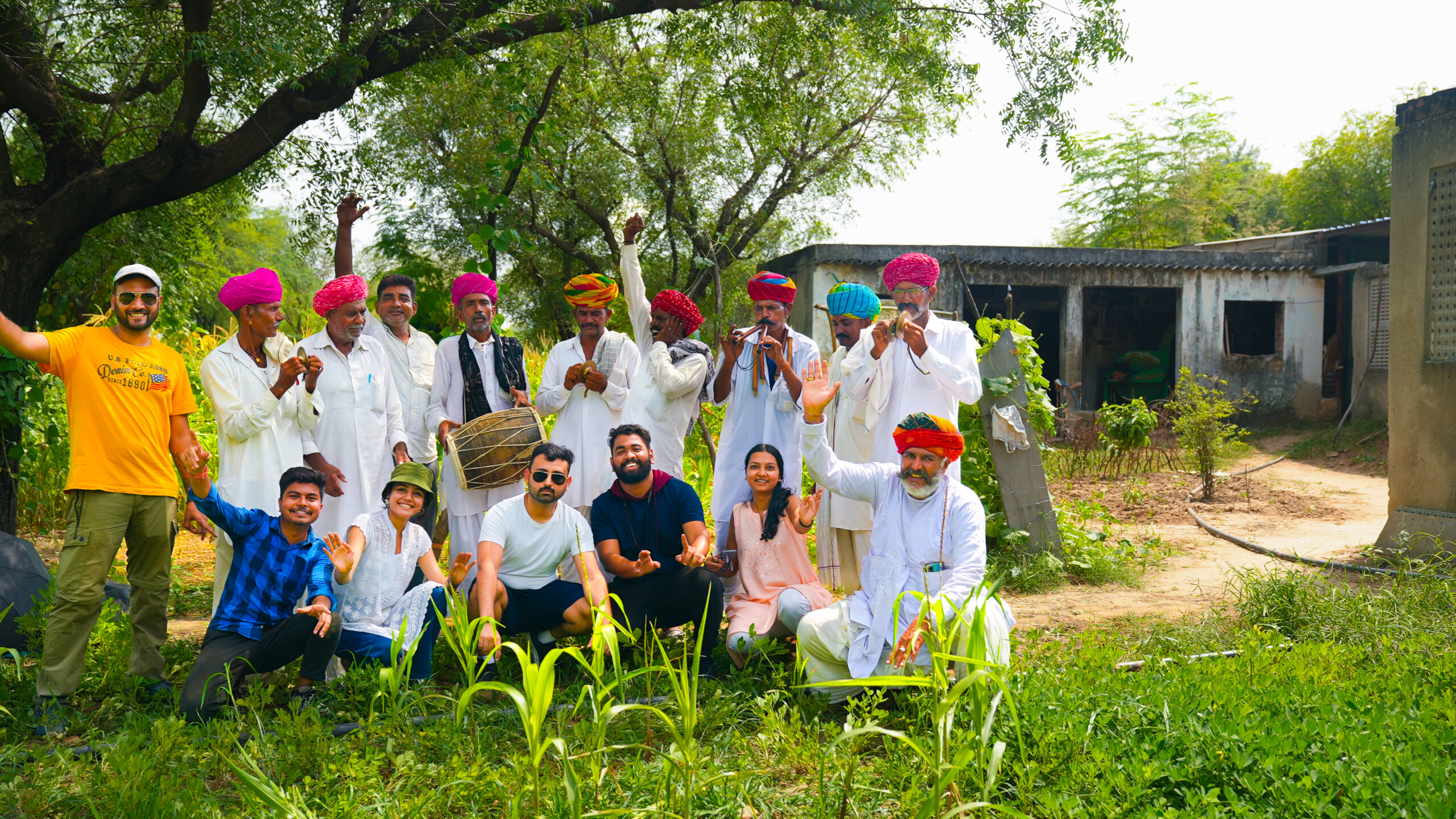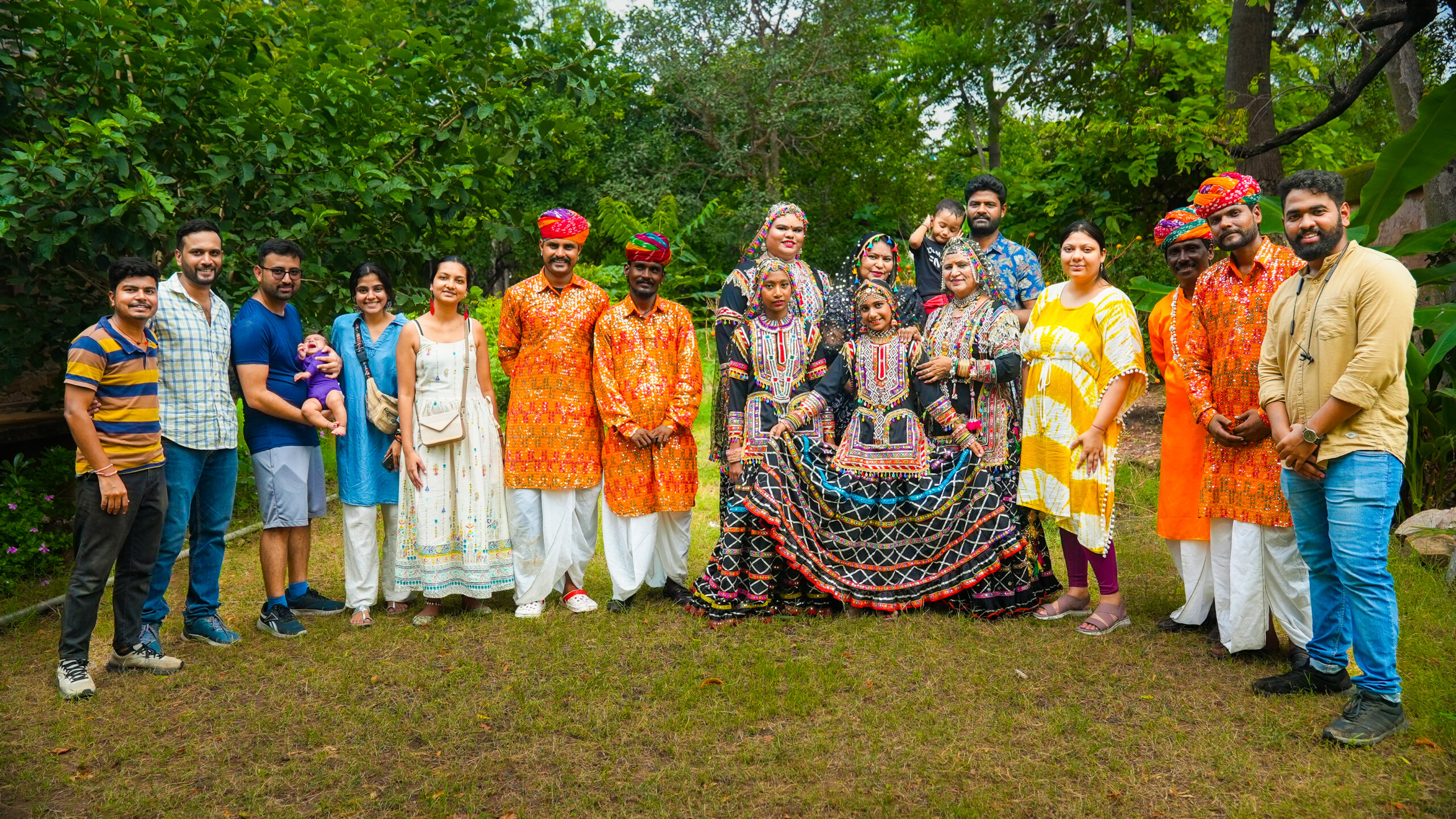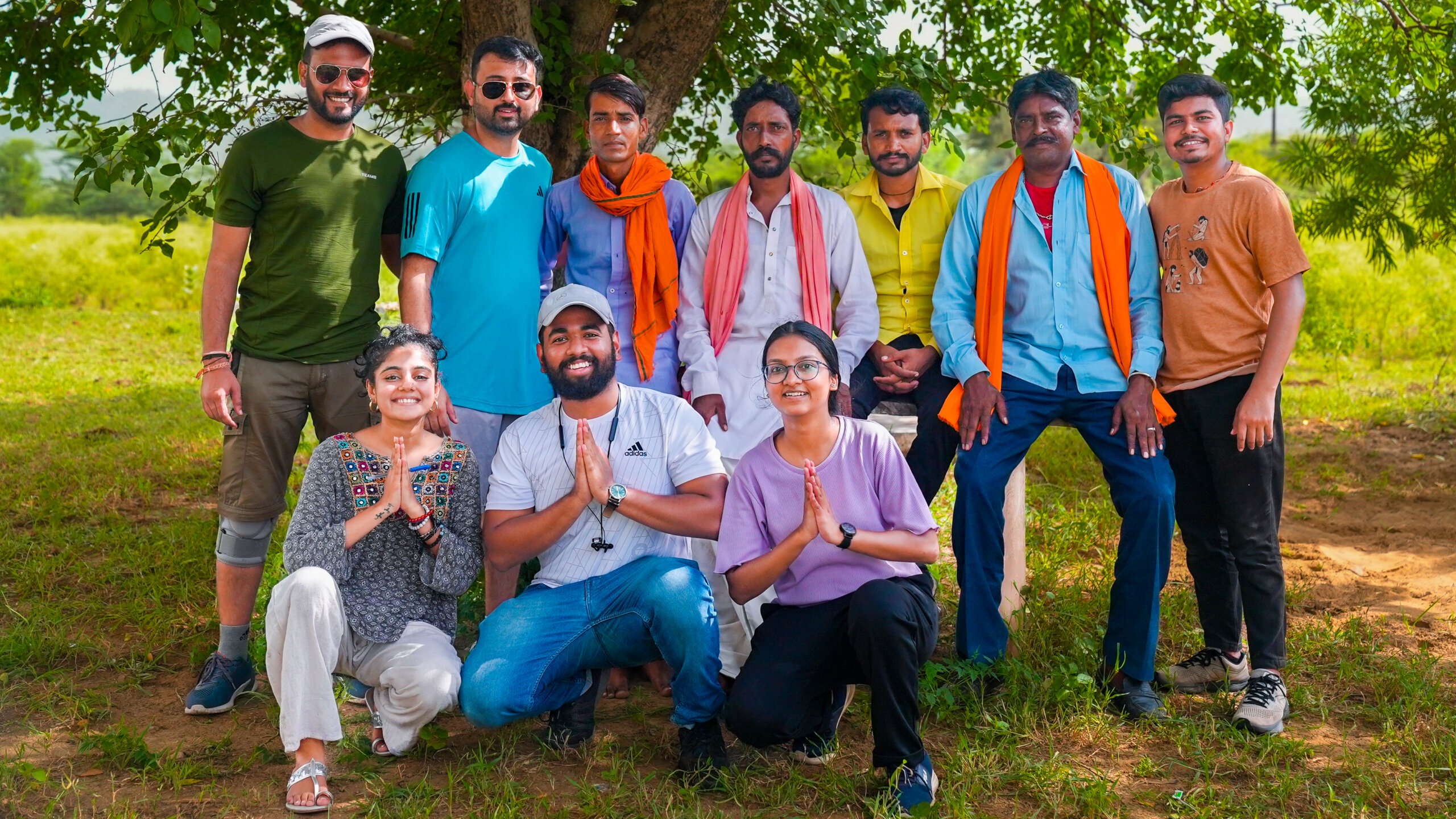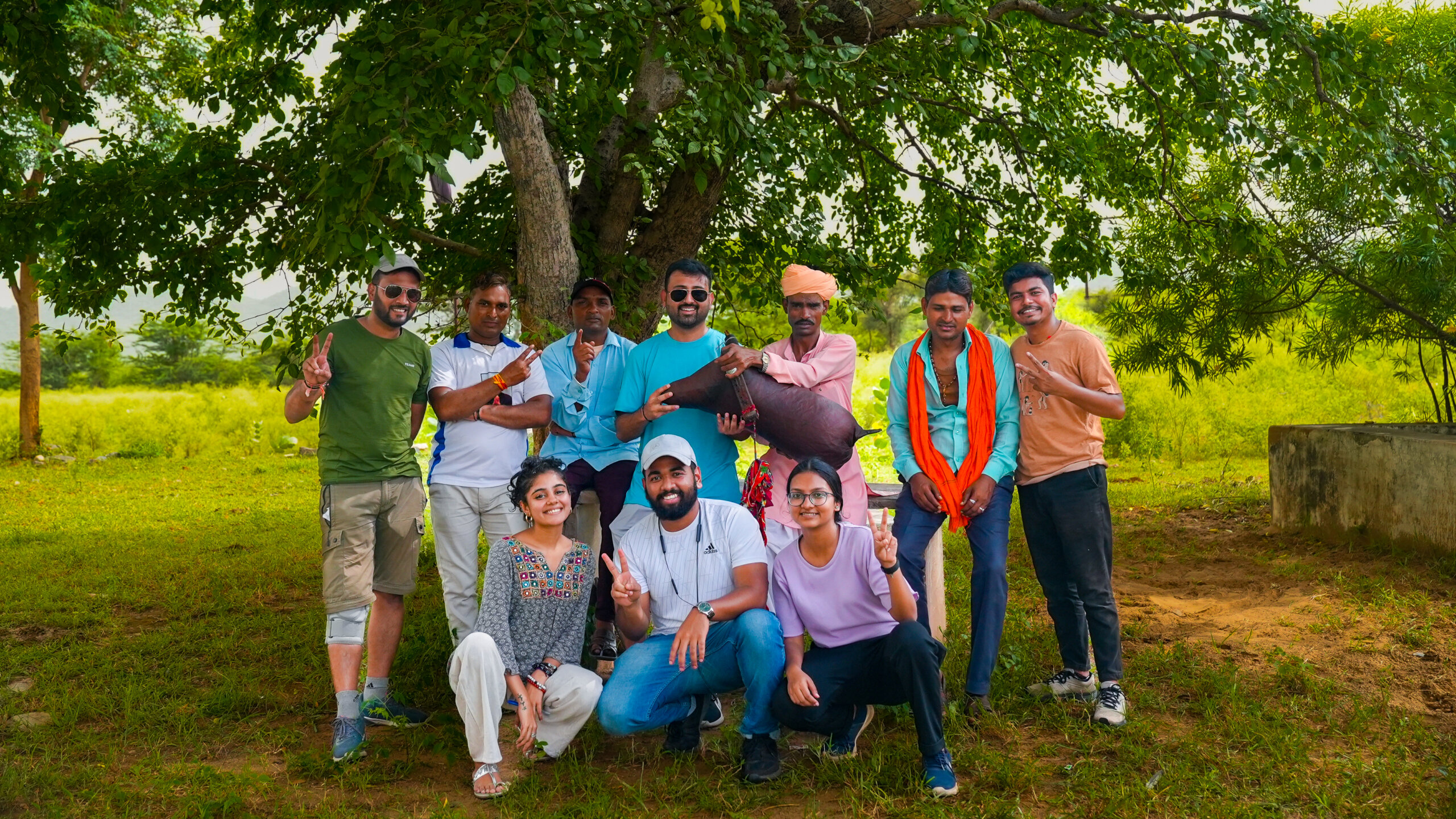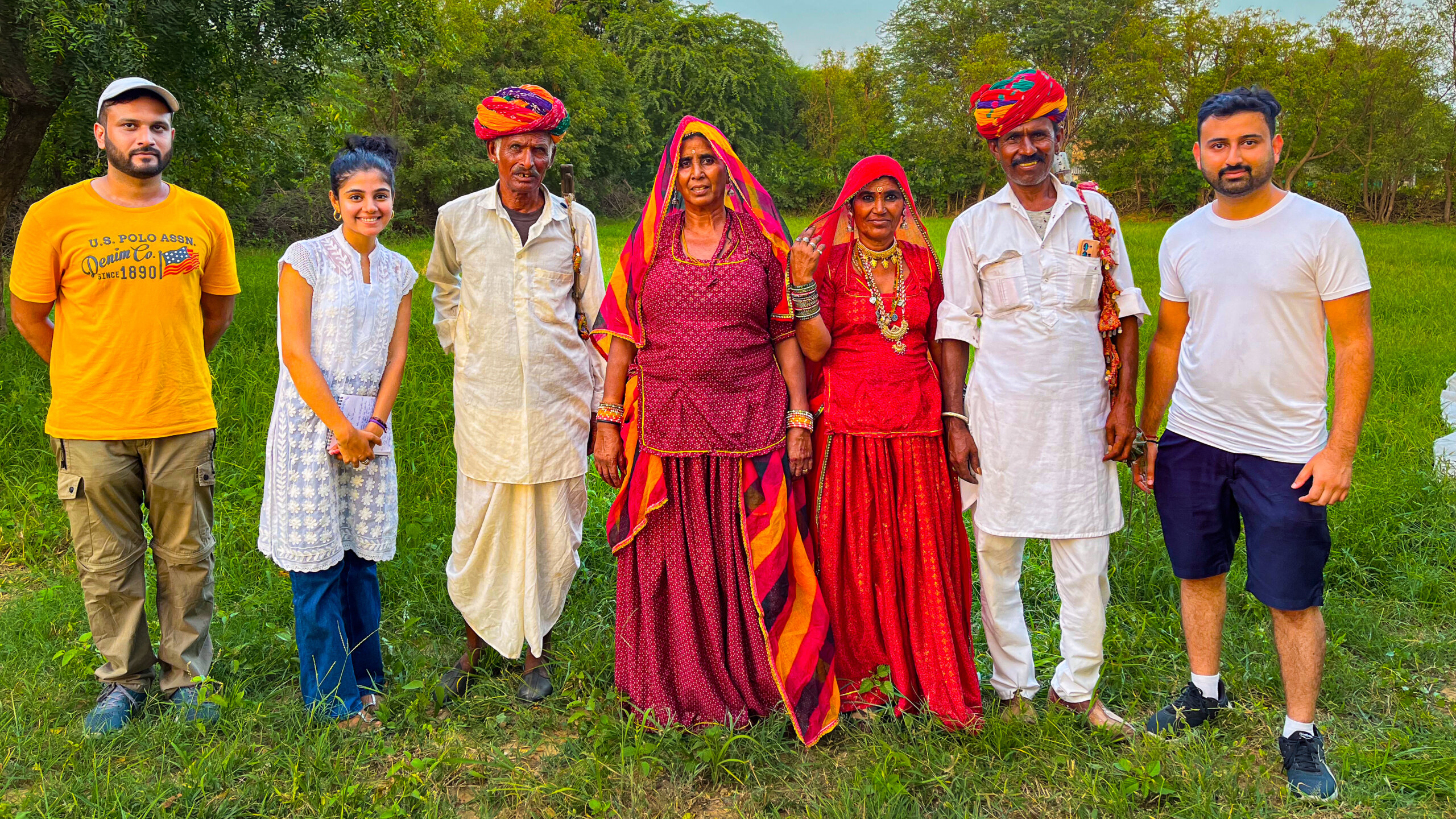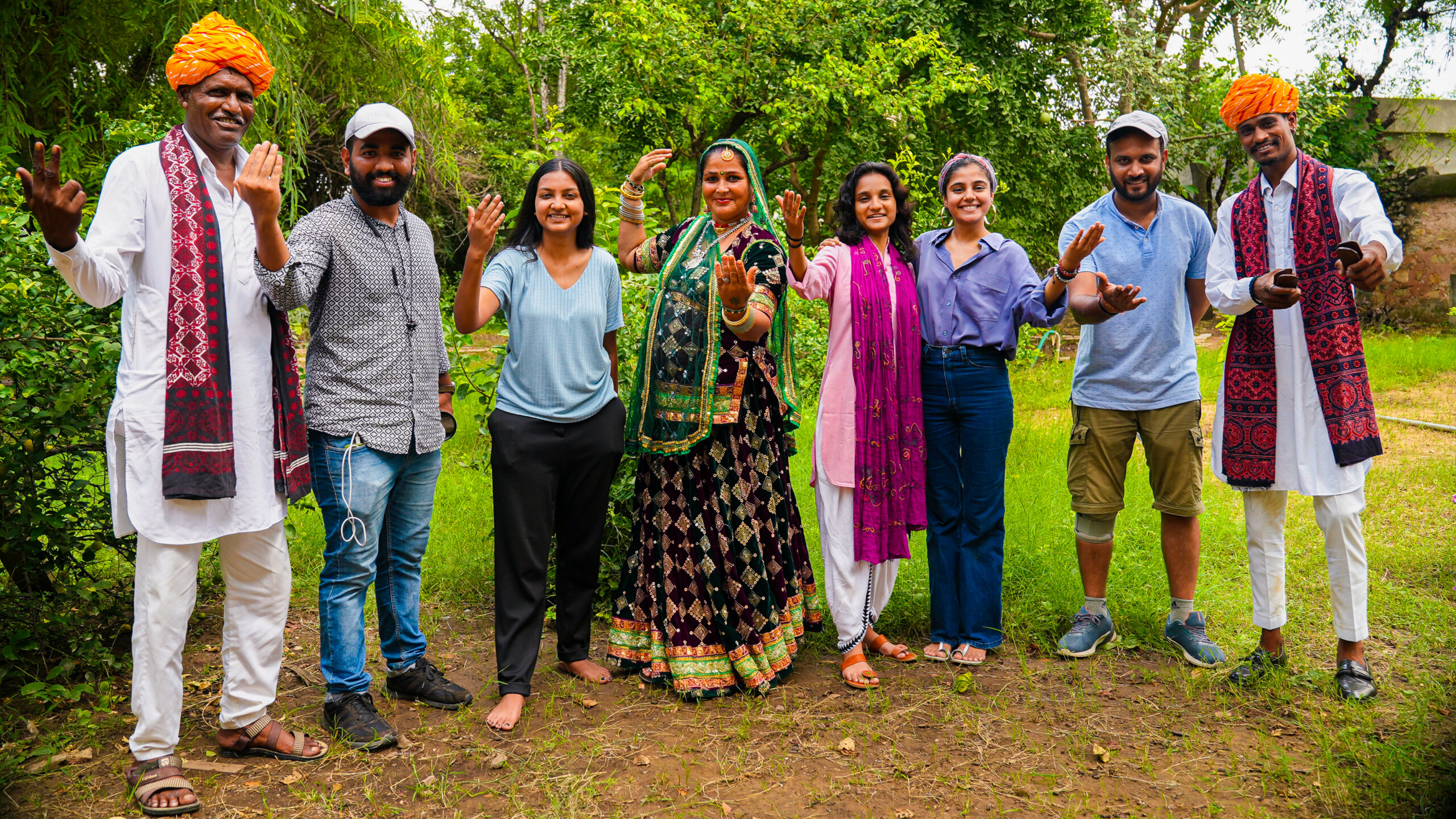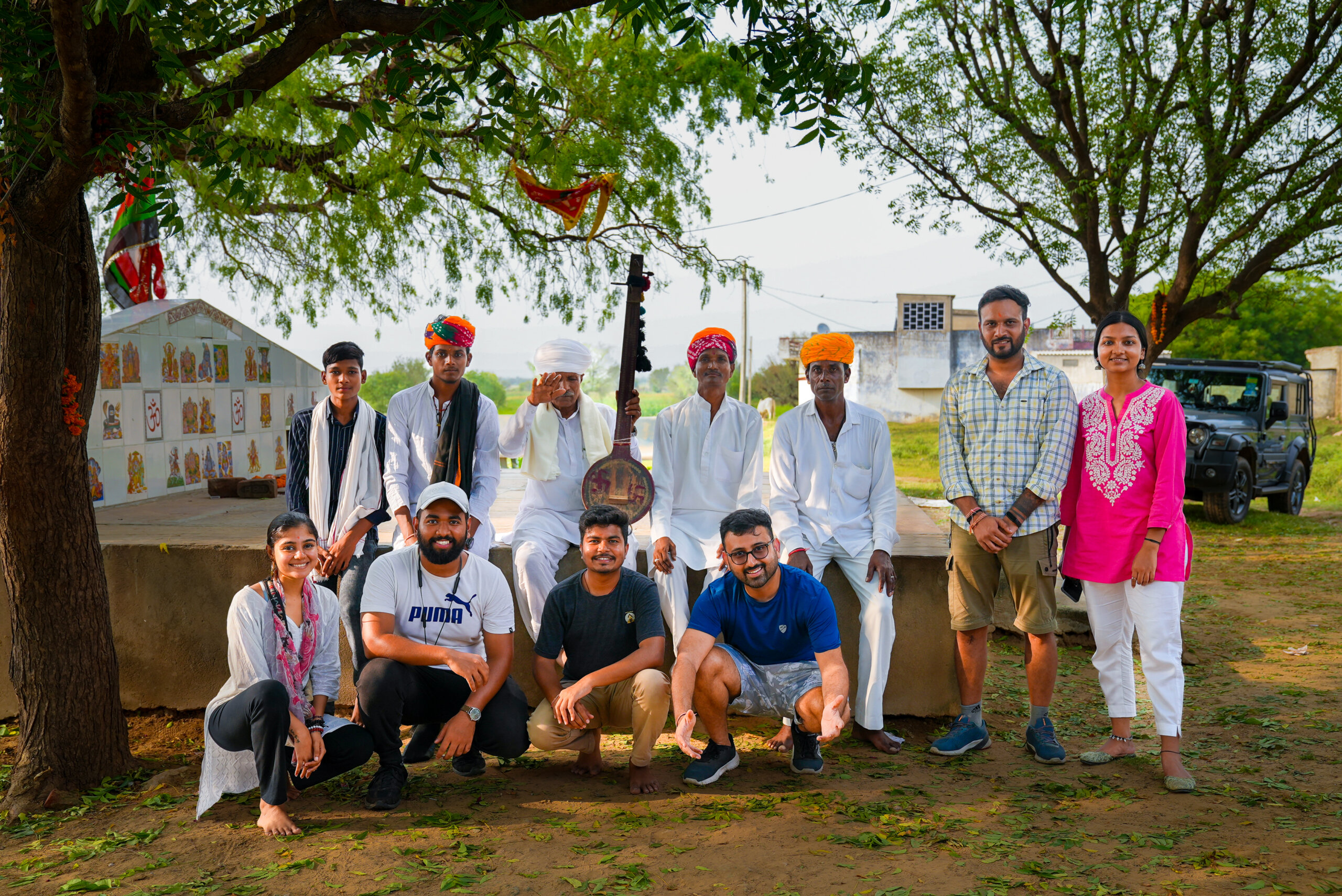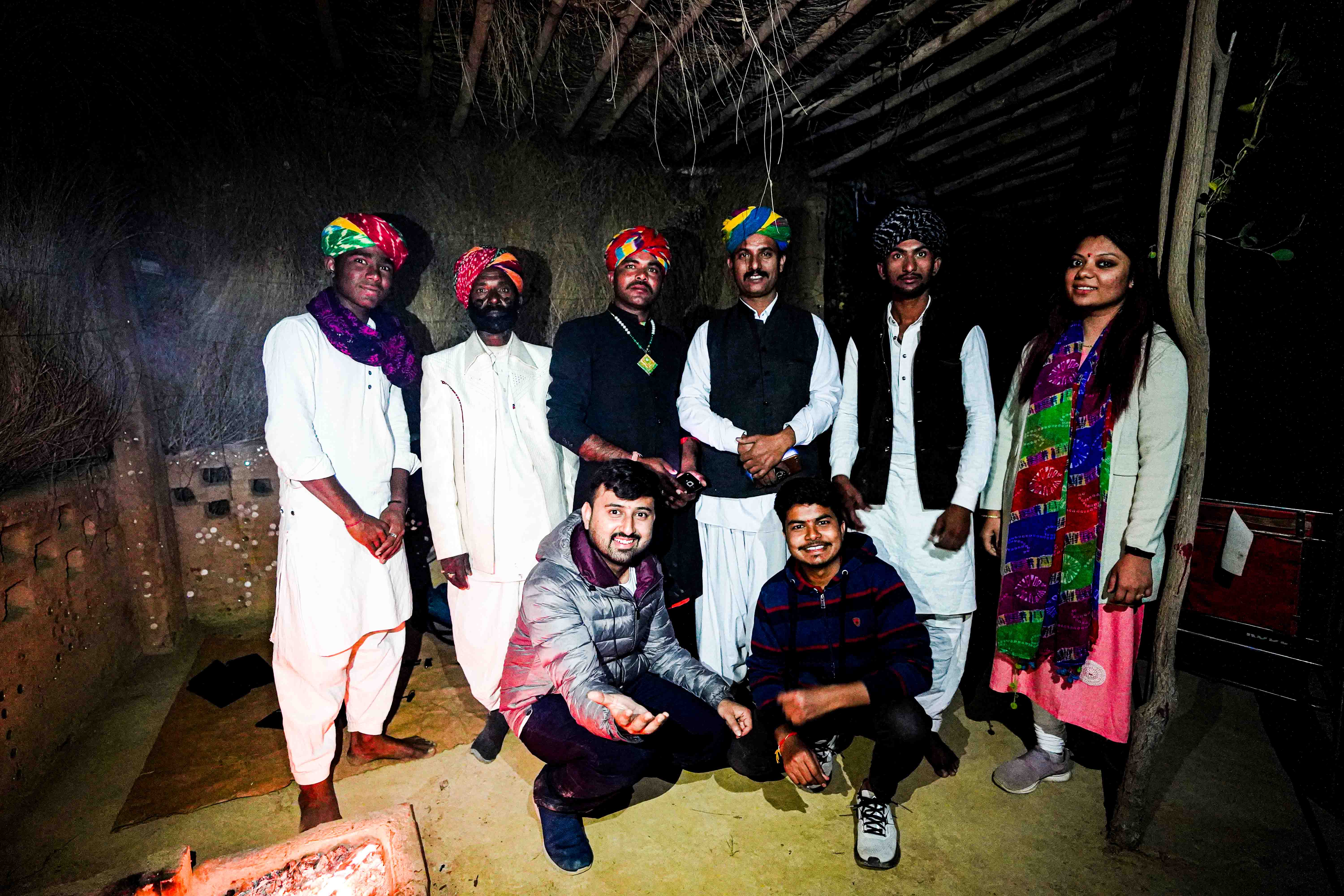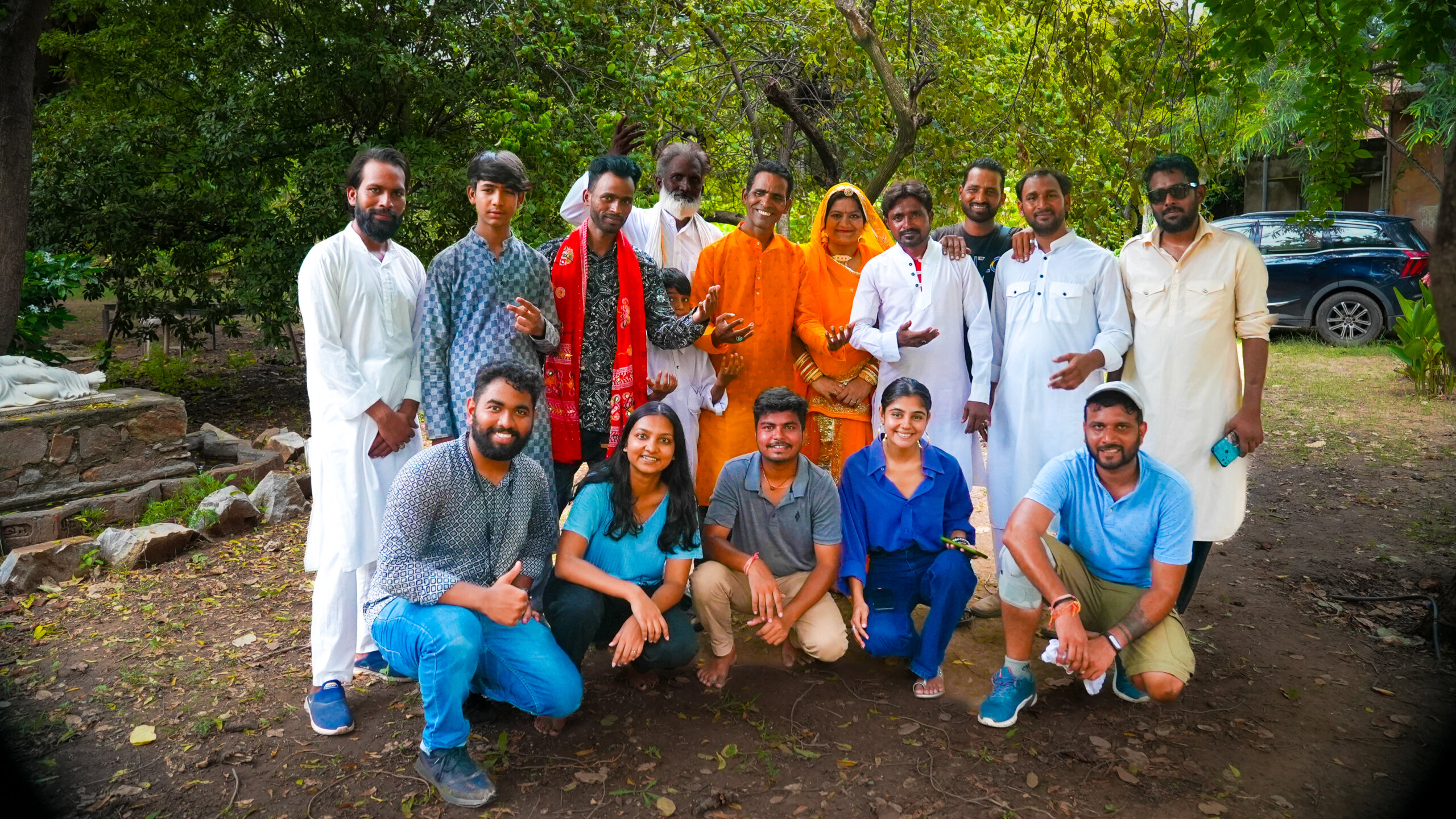
A Musical Odyssey Through Rajasthan’s Rich Folk Heritage
Embarking on a recording session with Sarvar Mirasi and his ensemble promised nothing short of a power-packed musical journey. Within this group, the vast and diverse landscape of folk music came to life in the most captivating way imaginable. With a blend of accomplished instrumentalists and exceptional vocalists, their performance was nothing less than a symphony of tradition and talent.
Comprising ten individuals, this musical collective wielded a diverse range of instruments, from the soul-stirring Sarangi to the whimsical Morchang, the resonant Bhapang, the rhythmic Khartal, the melodic Tabla, the lively Dholak, and the harmonious Harmonium. The ensemble featured a lead singer and four chorus members, each contributing their unique voice to the rich tapestry of sound.
What filled the air that day was the melodious rendition of Rajasthani Maand, a genre akin to the classical Ghazals or Thumri. Their performance transported listeners to a realm where classical nuances mingled with the soulful storytelling inherent in Rajasthani folk music.
However, it’s crucial to note that Sarvar Mirasi’s connection to music runs deep, as he belongs to the ancient Mirasi community. This community’s roots extend from North India to Pakistan, and they have been the keepers of folklore and the oral tradition since time immemorial. In the vast expanse of Rajasthan, you’ll often find these communities nestled in districts such as Jaipur, Jodhpur, Bikaner, Nagaur, Ajmer, Sikar, Barmer, and beyond.
Sarvar Mirasi, a torchbearer of the Sikar gharana, embarked on his musical journey at a tender age. What’s heartwarming is that he is now passing on this legacy to his own child, ensuring that the flame of this ancient tradition continues to burn brightly.
The Mirasi musicians of Rajasthan stand as cultural custodians, preserving not only the music but also the stories, history, and traditions of this region. Their performances are a testament to the enduring allure of Rajasthan’s folk music, bridging the gap between the classical and the contemporary, and weaving a rich tapestry of musical heritage that continues to captivate audiences everywhere.
– Hrisha Rashmi (Volunteer)

